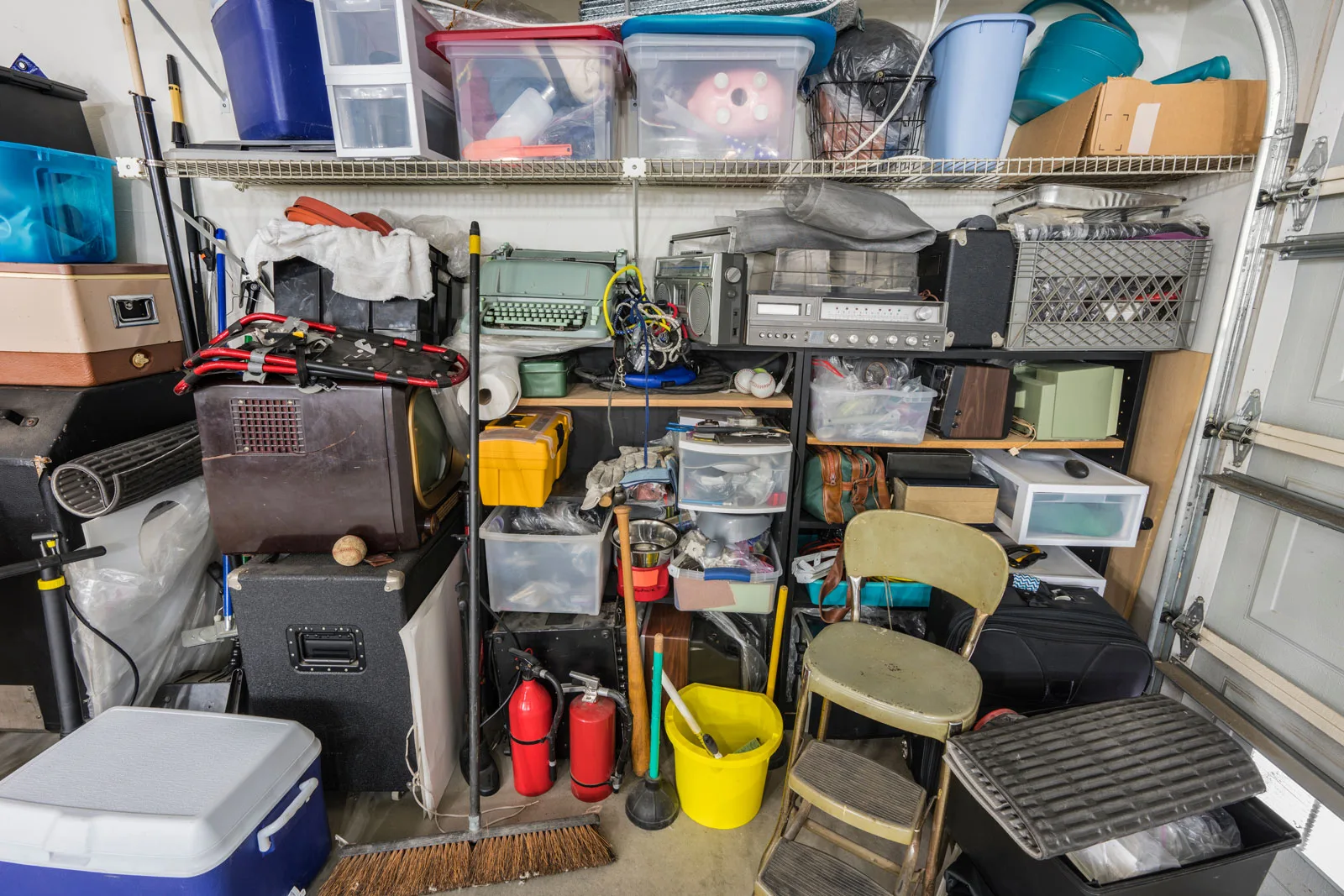In the quiet corners of our homes, nestled among forgotten belongings, lies a phenomenon that both fascinates and perplexes hoarding. It’s more than just a cluttered living space; it’s a complex psychological labyrinth that many find themselves navigating without a map. When collecting becomes compulsive, understanding the underlying psychology is the key to unlocking the mystery.
In today’s consumer-driven society, the line between collecting and hoarding can sometimes blur. While collecting can be a harmless hobby, for some, it spirals into a compulsive behavior known as hoarding disorder.
At first glance, hoarding may seem like a simple matter of acquiring too many possessions. But peel back the layers, and you’ll uncover a tapestry woven with intricate threads of emotion, cognition, and behavior. It’s a manifestation of deeply rooted psychological processes, often serving as a coping mechanism for underlying issues.
One of the primary drivers behind hoarding is the attachment to possessions. Each item holds a story, a memory, or a perceived utility that imbues it with significance. For someone struggling with hoarding, letting go of these items can feel like severing ties with a part of themselves or their past. The fear of loss, coupled with an intense emotional attachment, creates a powerful barrier to decluttering.
Additionally, hoarding can serve as a form of emotional regulation. Acquiring and surrounding oneself with possessions can provide a temporary sense of comfort and security, acting as a buffer against anxiety, depression, or trauma. The act of collecting becomes a coping mechanism, offering a brief respite from life’s uncertainties.
But beneath the surface, the seemingly benign act of collecting can spiral out of control, leading to compulsive behavior. The line between what is valuable and what is superfluous blurs, as individuals struggle to differentiate between necessity and excess. As the clutter accumulates, so too does the sense of overwhelm and shame, fueling a vicious cycle of acquisition and avoidance.
Understanding the psychology behind hoarding is crucial for effective intervention and support. It’s not simply a matter of tidying up or organizing belongings; it requires a compassionate and nuanced approach that addresses the underlying emotional and cognitive factors at play.
The Evolution from Collector to Hoarder
What turns a passionate collector into a hoarder? It often starts innocently: a few extra items here, a reluctance to throw away a keepsake there. However, for those with hoarding disorder, this reluctance intensifies into an overwhelming compulsion. The fear of discarding items—fueled by anxiety, perfectionism, or emotional attachment—drives them to keep accumulating, even when their living spaces become unmanageable.
The transition from collector to hoarder often begins innocuously, with a genuine passion for acquiring and cherishing certain items. What starts as a hobby or interest gradually evolves into something more consuming as the boundaries between collecting and hoarding blur. Initially, the thrill of adding to a collection brings joy and fulfillment, but over time, the desire to acquire becomes compulsive, driven by underlying emotional needs rather than genuine appreciation.

As possessions accumulate, so too does the difficulty of letting go, as each item represents a piece of identity or security. The evolution from collector to hoarder is a journey fraught with complexities, where the line between passion and compulsion becomes increasingly blurred.
Cognitive Traps and Emotional Tangles
At the heart of hoarding lies a web of cognitive distortions. Hoarders often believe that every item has potential value or could be useful someday. This perfectionist mindset creates a paralyzing fear of making wrong decisions, leading to the retention of countless items. Emotionally, possessions can serve as a comfort, a way to cope with trauma, loss, or loneliness. The act of acquiring and holding onto items provides temporary relief from deeper psychological distress.
In the labyrinth of hoarding lies a web of cognitive traps and emotional tangles that ensnare the mind and heart. From the deceptive allure of “just in case” to the sentimental weight of every object, each possession becomes a knot in the intricate tapestry of the hoarder’s psyche. Rationalizations morph into excuses, as the mind clings to false beliefs about the value and necessity of possessions. Meanwhile, emotions run rampant, tangled in a web of attachment, fear, and anxiety, trapping individuals in a cycle of acquisition and avoidance. Untangling the cognitive traps and emotional tangles of hoarding requires patience, understanding, and a willingness to confront the underlying beliefs and emotions driving this complex behavior.
The Brain’s Role in Hoarding
Recent studies shed light on the neurobiological aspects of hoarding disorder. Brain imaging reveals that individuals with hoarding tendencies exhibit abnormal activity in regions associated with decision-making and emotional regulation. These findings suggest that hoarding is not merely a behavioral choice but a condition with roots in brain function.

At the heart of hoarding lies a fascinating interplay between the mind and the brain, where neural pathways weave a tangled web of behaviors and emotions. The brain, that magnificent organ, plays a pivotal role in shaping the compulsive urge to accumulate possessions. Neurological studies unveil the intricate mechanisms at play, revealing how altered brain structures and neurotransmitter imbalances contribute to the obsessive need to hoard.
From the amygdala, sounding alarms of fear and attachment, to the prefrontal cortex, struggling to exert control, every neural circuitry becomes a battleground in the war against clutter. Understanding the brain’s role in hoarding is not just a matter of science; it’s a key to unlocking the mysteries of the human mind and offering hope for those trapped in its grip.
Environmental Influences
While genetics and brain chemistry play roles, environment and upbringing are also crucial. Many hoarders have histories of trauma or chaotic family environments where attachment to objects replaced healthy emotional bonds. Understanding these influences helps in creating empathetic and effective treatment plans.
In the dance between nature and nurture, environmental influences wield a profound sway over the labyrinthine landscape of hoarding. From childhood experiences shaping attachment to possessions, to societal pressures fueling consumerism, the environment serves as both catalyst and canvas for this complex behavior. Cluttered homes, chaotic living spaces, and the constant bombardment of advertisements all conspire to fuel the flames of acquisition. Meanwhile, cultural norms and family dynamics set the stage for emotional attachments to possessions, laying the groundwork for hoarding tendencies to take root. Unraveling the environmental influences on hoarding offers a glimpse into the intricate web of societal, familial, and personal factors shaping this enigmatic phenomenon.
The Ripple Effect on Life
Hoarding’s impact extends far beyond cluttered rooms. It strains relationships, impairs daily functioning, and poses health risks. Family members often feel helpless, leading to strained or severed ties. Social isolation becomes common as the shame of living in a hoarded space grows.
The impact of hoarding extends far beyond cluttered living spaces; it sends ripples through every aspect of life, leaving no corner untouched. Relationships strain under the weight of possessions, as loved ones struggle to navigate the chaos and frustration that hoarding brings. Careers falter as clutter encroaches on productivity and professional opportunities slip through grasping fingers. Financial stability teeters on the brink as resources are squandered on unnecessary acquisitions, leaving little room for savings or security. And amidst the turmoil, mental and physical health suffer, buried beneath mountains of belongings and suffocated by the weight of emotional baggage. The ripple effect of hoarding is profound, leaving a wake of chaos and upheaval in its wake, but with understanding and support, there is hope for calm waters ahead.
Pathways to Recovery
Treatment for hoarding disorder requires a multifaceted approach. Cognitive-behavioral therapy (CBT) is particularly effective, helping individuals challenge their distorted thinking and develop healthier decision-making patterns. Medications, particularly those that address underlying anxiety or depression, can also be beneficial. Additionally, support groups and community clean-up efforts provide practical and emotional support, helping hoarders reclaim their lives and homes.
Therapeutic techniques such as cognitive-behavioral therapy (CBT) and mindfulness-based interventions have shown promise in treating hoarding disorder. By helping individuals challenge distorted beliefs about possessions and develop healthier coping strategies, these approaches empower individuals to reclaim control over their living spaces and their lives.
Hoarding can have profound effects on mental health, often exacerbating existing conditions and giving rise to new challenges. The relentless accumulation of possessions can fuel feelings of anxiety and distress, as individuals grapple with the overwhelming clutter and chaos in their living spaces. Persistent indecision and difficulty discarding items can lead to feelings of guilt, shame, and inadequacy, further eroding self-esteem and self-worth. Hoarding can also trigger symptoms of depression, as individuals struggle to find joy and fulfillment amidst the clutter and isolation. Moreover, the secrecy and shame surrounding hoarding can fuel social withdrawal and loneliness, exacerbating feelings of isolation and alienation. Left untreated, hoarding can significantly impact mental health, impairing daily functioning and quality of life, but with appropriate support and intervention, individuals can find hope and healing on the path to recovery.
Breaking free from the grip of hoarding is no easy feat, but with patience, understanding, and the right support, it is possible. By shining a light on the hidden depths of hoarding psychology, we can foster empathy, dispel stigma, and pave the way for a more compassionate approach to supporting those affected by this complex condition.
Take away wisdom from Masvingo
Delving into the psychology behind hoarding unveils a labyrinth of complexity, where emotions, cognition, and behavior intertwine in profound ways. It teaches us that beneath the clutter lies a story—a narrative of attachment, coping, and vulnerability. As we unravel the hidden depths of hoarding, let us approach with empathy, understanding that behind every stack of possessions is a person wrestling with their own demons.
Let us dispel stigma and judgment, recognizing that hoarding is not a mere matter of tidying up, but a deeply rooted psychological challenge that warrants compassion and support. And let us shine a light on the path to healing, offering hope and guidance to those navigating the shadows of compulsive acquisition. In embracing the complexities of hoarding psychology, we uncover not only the depths of human struggle but also the resilience and strength that lie within each individual on the journey toward recovery.


Leave a Reply